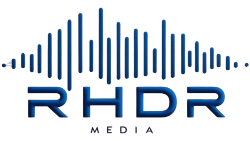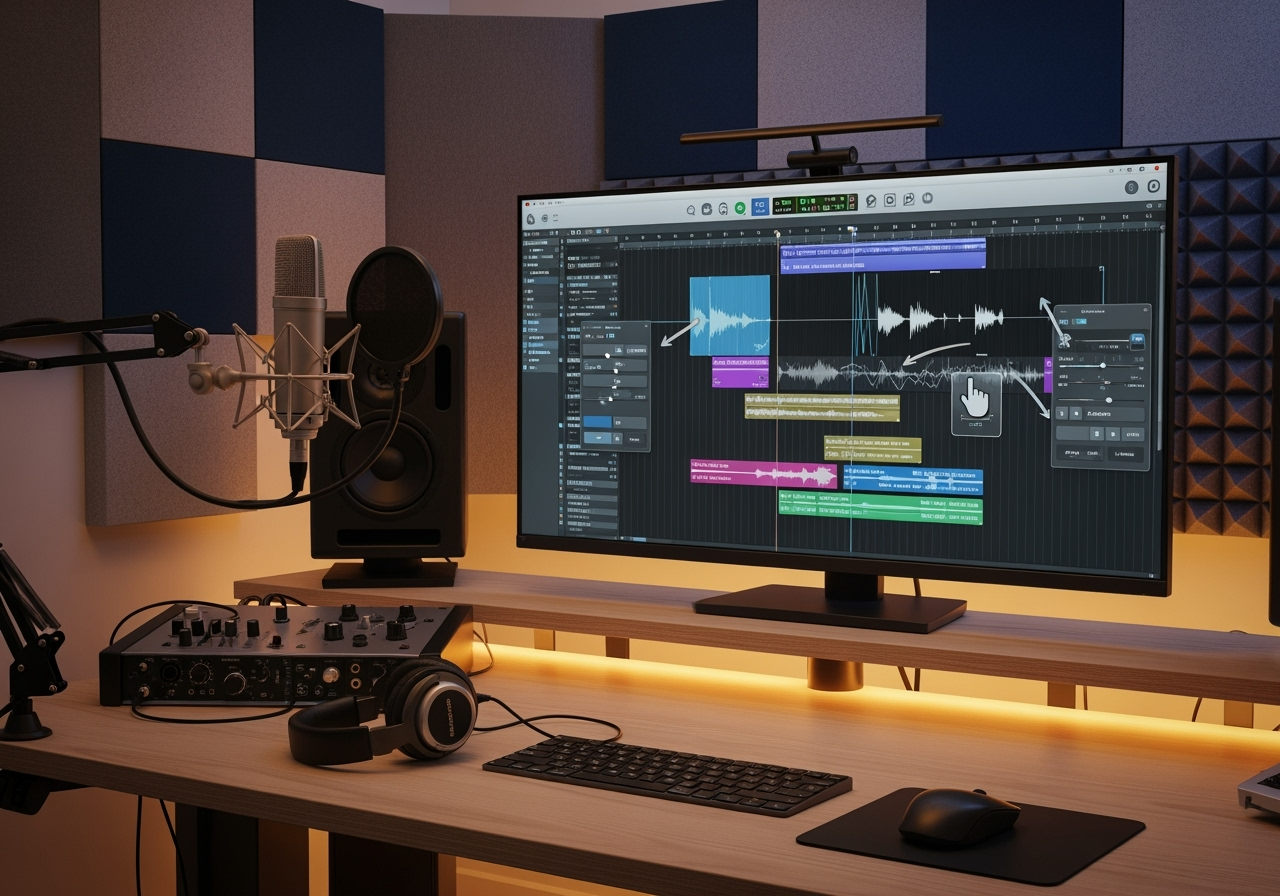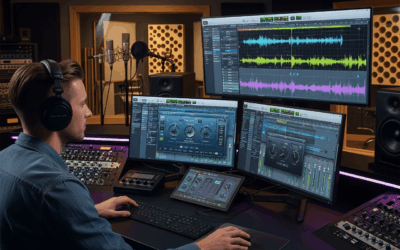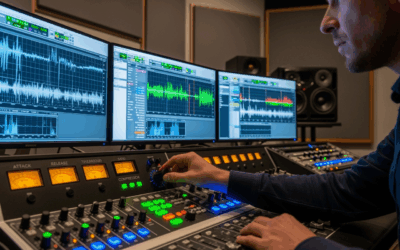The Problem: Content creators spend hours perfecting their video editing, color grading, and visual effects, but treat audio as an afterthought—recording with built-in microphones, skipping post-production, and wondering why their professional-looking content sounds amateur.
The Solution: Prioritizing audio quality from the start of your content creation process will dramatically improve audience engagement, retention, and perceived professionalism, often with minimal additional effort or investment.
The 80/20 Rule of Content Impact
Here’s what most content creators don’t realize: your audience will forgive mediocre video quality, but they won’t tolerate poor audio. Studies show that viewers are 5 times more likely to abandon content due to bad audio than bad video quality.
This creates a massive opportunity. While your competitors are obsessing over expensive cameras and complex lighting setups, you can gain a significant advantage by simply getting your audio right. Professional audio quality often requires less investment than professional video, but delivers greater impact on audience perception.
Why Audio Gets Neglected
Visual bias: We’re naturally drawn to what we can see, making video quality feel more important than what we hear.
Technical intimidation: Audio production seems more complex and technical than it actually is, causing creators to avoid learning proper techniques.
Equipment misconceptions: Many creators think professional audio requires expensive studio setups, when simple improvements can yield dramatic results.
Workflow integration: Audio is often treated as a separate step rather than being integrated into the entire content creation process.
The Content Creator’s Audio Priority Framework
Pre-Production: Plan for Audio Success
Before you start recording, consider your audio needs:
– Environment selection: Choose quiet locations with minimal echo and background noise
– Equipment preparation: Ensure your microphone is positioned correctly and levels are set properly
– Backup planning: Have redundant recording methods in case of equipment failure
Production: Capture Clean Audio
During recording, audio should be monitored as carefully as video:
– Real-time monitoring: Use headphones to catch audio problems while you can still fix them
– Consistent positioning: Maintain the same distance and angle to your microphone throughout recording
– Environmental awareness: Stay alert to background noise, air conditioning, and other audio distractions
Post-Production: Polish for Professional Results
Audio post-production doesn’t have to be complex:
– Basic cleanup: Remove background noise, mouth sounds, and unwanted audio artifacts
– Level consistency: Ensure your voice maintains consistent volume throughout your content
– Enhancement: Apply subtle EQ and compression to make your voice sound clear and engaging
The Quick Audio Upgrade Strategy
You don’t need to overhaul your entire setup to see dramatic improvements. Focus on these high-impact changes:
Microphone positioning: Move your microphone closer to your mouth (4–6 inches) for immediate improvement in clarity and presence.
Room treatment: Record in smaller rooms with soft furnishings, or create a temporary acoustic environment using blankets and pillows.
Post-production basics: Learn three essential processes: noise reduction, EQ, and compression. These three techniques can transform amateur audio into professional-sounding content.
The Business Impact of Better Audio
Professional audio quality directly impacts your content’s business performance:
– Increased watch time: Better audio keeps viewers engaged longer
– Higher conversion rates: Professional-sounding content builds trust and credibility
– Improved shareability: People are more likely to share content that sounds professional
– Enhanced brand perception: Quality audio elevates your entire brand image
Common Audio Mistakes to Avoid
Recording too quietly: This forces you to boost volume in post-production, amplifying noise along with your voice.
Ignoring room acoustics: Even expensive microphones sound amateur in echo-heavy environments.
Over-processing: Applying too much noise reduction, EQ, or compression can make your audio sound unnatural.
Inconsistent setup: Changing your recording setup between sessions creates noticeable quality variations.
Pro Tip: The most successful content creators treat audio and video as equally important from day one. They understand that professional audio quality is often the difference between content that gets shared and content that gets skipped. Start with your audio foundation, and your visual content will have much greater impact because your audience can focus on your message instead of being distracted by poor sound quality.
Ready to give your content the professional audio it deserves? Contact RHDR Media at (901) 485–9180 or visit rhdr.media for content creator audio services. Whether you need post-production, recording consultation, or complete audio solutions, let’s make your content sound as professional as it looks.





0 Comments